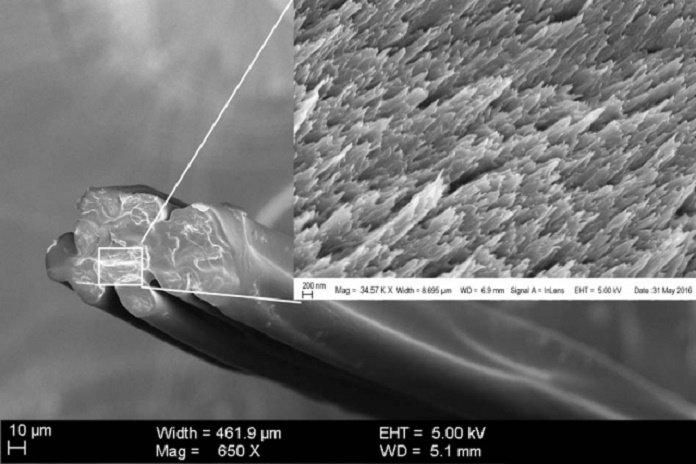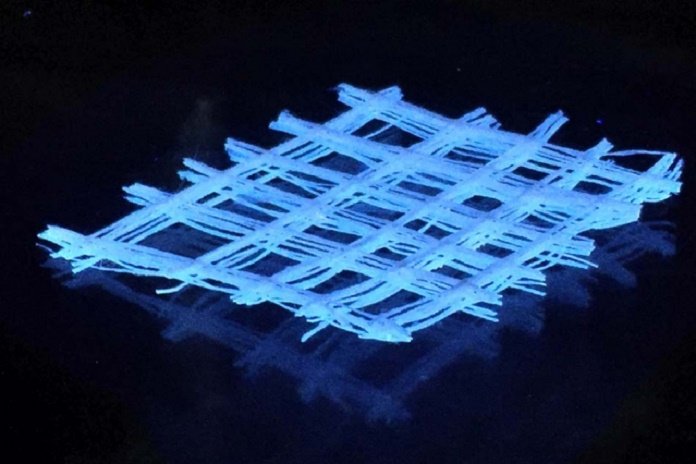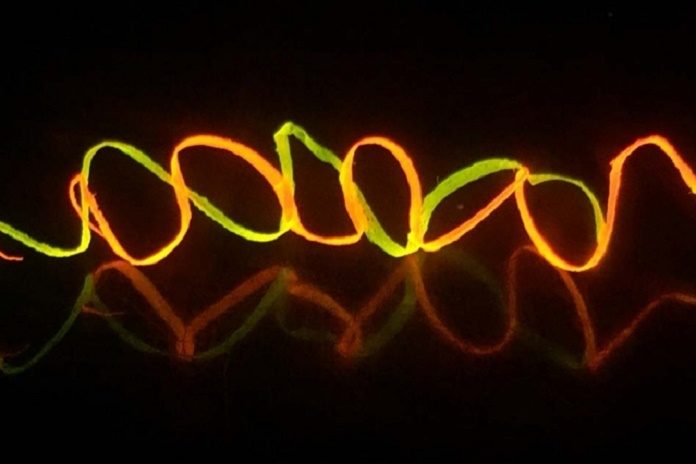MIT scientists have developed a new material called regenerated silk fiber (RSF) to harness the best qualities of natural silk produced by silkworms. They developed it in a way that makes it stronger and opens up a wide variety of new shapes and structures that could never be formed from natural silk.
They did this by breaking down the silk (not too much) and dissolving the cocoons built by silkworms into an intermediate form composed of microfibrils. It forms tiny, thread-like assemblies that store essential hierarchical structures that give the silk its strength.

Courtesy of the researchers
Scientists compare this recycling of materials to tearing down an old brick house. Instead of just knocking the house down into a pile of rubble, however, the individual bricks are carefully separated and then used to build a new structure.
Buehler, who is the head of the Department of Civil and Environmental Engineering said, “Nature is still better at making the microstructures” that, as demonstrated in some of his earlier research, is responsible for silk’s unique stiff, stretchy properties. In this case, we take advantage of what nature provides.”

Courtesy of the researchers
“Though silk thread and fabric are expensive, the material’s cost comes mainly from the labor-intensive process of unraveling the thread from the cocoon and weaving it, not from the actual production of the silkworms and their cocoons, which are quite inexpensive, explains Ling. In bulk, unprocessed silkworm cocoons cost only about $5 per kilogram (2.2 pounds).”
By breaking down the silk, scientists found that they could produce a fiber twice as stiff as conventional silk and approaching the stiffness of spider dragline silk. Scientists believe that their process could pave a variety of possibilities for new uses.
The strategy additionally enables the scientists to shape the material in ways that would never be copied by common silk. It could be shaped, for instance, into networks, tubes, filaments considerably thicker than characteristic silk, loops, sheets and different structures.
Buehler said, “We want to make our own new materials.”
Research scientist Zhao Qin said, “Such forms can be created by using the reconstituted material in a kind of 3-D printing system customized for silk solution. And one advantage of the new process is that it can be carried out using conventional manufacturing technologies, so scaling it up to commercial quantities should not be difficult. The specific properties of the fiber, including its stiffness and toughness, can be controlled as needed simply by varying the speed of the extrusion process.”
“The technology has the potential to lay the foundation for new types of woven materials and functional composites— these could be for a whole range of uses, such as a new generation of textiles and biosensors.”
